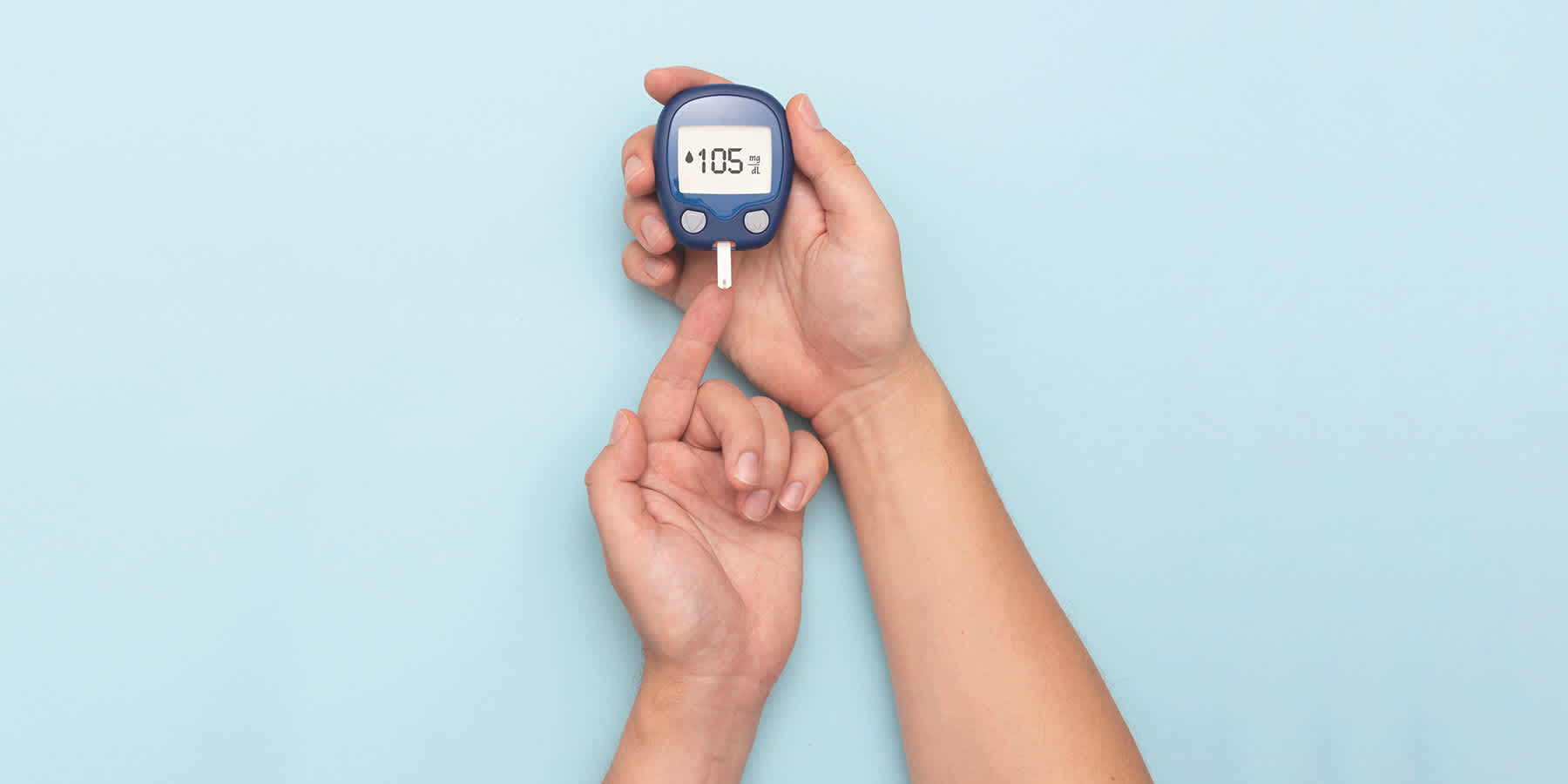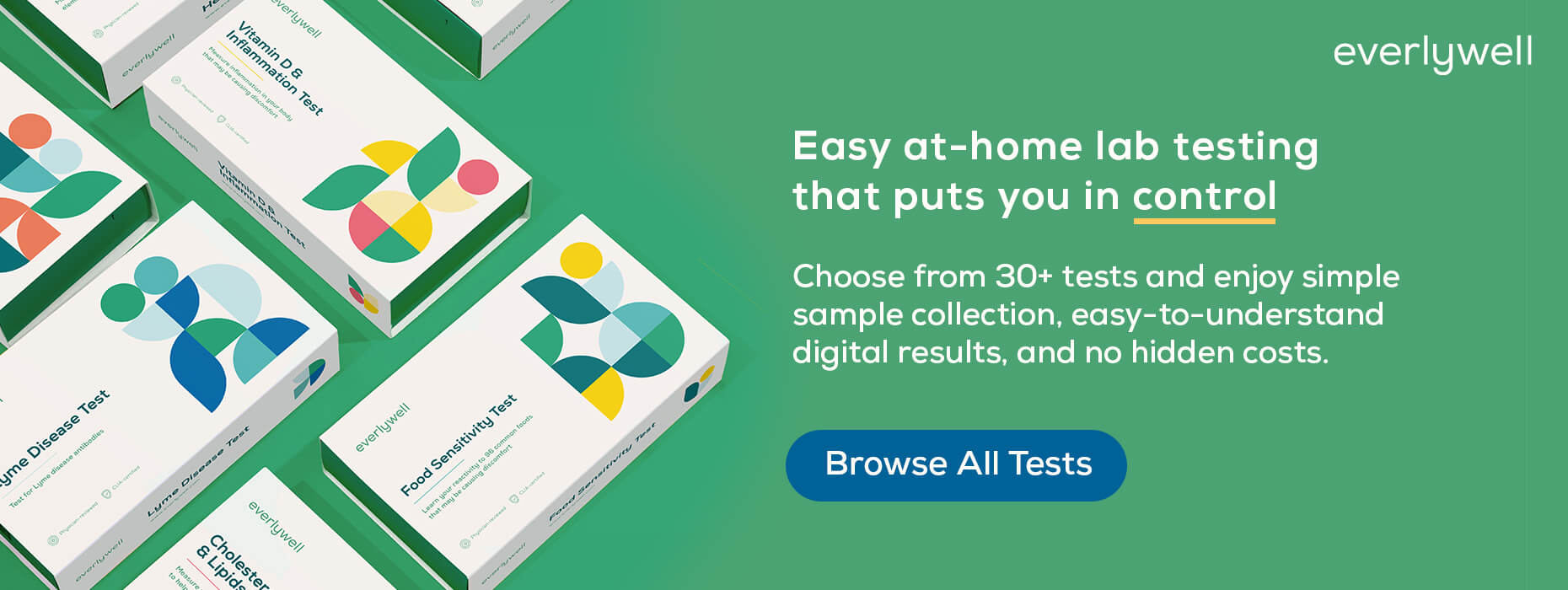
Can prediabetes be reversed?
Medically reviewed on February 9, 2022 by Jordan Stachel, MS, RDN, CPT. To give you technically accurate, evidence-based information, content published on the Everlywell blog is reviewed by credentialed professionals with expertise in medical and bioscience fields.
According to the American Diabetes Association, about 34.2 million Americans had diabetes in 2018. Of those, about 7.8 million people were undiagnosed. About 1.5 million Americans are estimated to be diagnosed with diabetes every year [1].
Unmanaged diabetes can potentially cause problems with overall health, well-being, and quality of life. Prediabetes, a condition that precedes diabetes, is a relevant health condition in which blood sugar levels are higher than normal (you can check your A1c, an indicator of blood sugar levels, with the at-home HbA1c Test). Learn more about prediabetes and how you can reverse it below.
What Is Prediabetes?
Diabetes is characterized by the body’s inability to use insulin properly, resulting in high blood sugar levels and not enough glucose reaching the cells, tissues, and organs. Type 2 diabetes is the more common form of diabetes, in which the cells have built up insulin resistance. No matter how much the pancreas tries, it is unable to make enough insulin to compensate, causing sugar to build up in the blood. By comparison, in type 1 diabetes, the body’s immune system malfunctions and attacks the insulin-producing cells in the pancreas, preventing proper insulin production [2].
Prediabetes is when blood sugar levels are higher than normal but not high enough to be classified as type 2 diabetes. However, without making any dietary or lifestyle changes, a person with prediabetes has a higher likelihood of developing type 2 diabetes [3].
Prediabetes is a condition that should be taken seriously. Some people with prediabetes may experience long-term damage to the blood vessels, heart, and kidneys if the condition goes untreated long-term.3 This is partly why untreated prediabetes can also increase the risk of other health conditions, including heart disease and stroke [4].
About 88 million American adults are believed to have prediabetes. That percentage comprises more than one in three adults in the United States. Over 80 percent of people estimated to have prediabetes aren’t even aware that they have it [4].
What are the signs and symptoms of prediabetes?
Part of what makes diagnosing or identifying prediabetes more difficult is that, in many cases, it may not present any noticeable symptoms. Prediabetes can be present for years, and a person may not know until the condition has progressed into type 2 diabetes [4].
One potential symptom of prediabetes can be darker skin spots on certain parts of the body, particularly the neck, elbows, knees, knuckles, and armpits. If prediabetes has progressed to type 2 diabetes, symptoms may include:
- Frequent urination
- Increased hunger and thirst
- Physical fatigue
- Blurry vision [3]
The only way to identify prediabetes is to test blood sugar levels. The Everlywell HbA1c test looks at an indicator of blood sugar levels over the last three months.
Risk Factors for Prediabetes
There are different risk factors for prediabetes. These can include:
- Being older than 45
- Having an immediate family member (parent, sibling, or child) with diabetes
- Being diagnosed with polycystic ovarian syndrome (PCOS)
- Having gestational diabetes at any point in life [4]
If you have more than one of these risk factors, it may be worth getting screened. There are many screening tests for prediabetes and diabetes, but a simple blood sugar test is enough to gain meaningful insights into your health and can help you determine if you have prediabetes [4].
Reversing Prediabetes
Can prediabetes be reversed? The simple answer is yes, but it will often take some work and significant changes to lifestyle, including exercise and healthy eating habits. Even then, there is no immediate assurance, but most experts agree that it is possible to slow down the progression of prediabetes [5].
Reversing or slowing the progression of prediabetes largely involves reducing blood sugar levels or otherwise keeping blood sugar from rising. To achieve this, there are some lifestyle changes to consider.
Watch What You Eat
Of course, modifying one’s diet is a great place to start when it comes to reducing blood sugar levels. Diet is one of the main things that influences blood sugar. Try to focus on consuming plenty of vegetables with every meal, lean sources of protein, and whole grains instead of sweets and simple carbohydrates. A lower carbohydrate and sugar diet will be helpful for individuals with prediabetes and or type 2 diabetes for lowering their blood sugar levels and Hemoglobin A1C [6].
Focus on advantageous foods that you can add into your routine, rather than foods to omit. However, when possible, trying to limit foods with a high glycemic index will be helpful for reducing blood sugar. The glycemic index measures a food’s effect on blood sugar. High glycemic foods cause immediate spikes in blood sugar, whereas foods that are lower on the glycemic index scale allow for fewer blood sugar spikes and more sustained energy levels. Going off glycemic index alone can be confusing for some people, so it is best to get advice from a qualified healthcare professional if looking for tailored, dietary guidance [7].
Get Moving
Regular physical activity is a great way to help regulate blood sugar levels. First, regular exercise increases insulin sensitivity. This allows muscles cells to use insulin more efficiently, absorbing glucose during and after workouts. Second, even if insulin is not available, muscle cells take up glucose when they contract [8].
Guidelines from the Department of Health and Human Services recommend at least 150 minutes of aerobic activity per week along with strength training twice a week [9]. This translates to about a half-hour of physical activity on most days of the week. That can include anything from a walk around the block to gardening to shooting hoops. Any activity is better than zero activity, so find something sustainable for your lifestyle and (most importantly) fun for you.
Weight Loss
It’s important to note that people of all weights can develop diabetes, and losing too much weight can negatively affect some people’s mental and physical health. Studies suggest that losing a small amount of weight, about 5 to 7 percent of your body weight, may help lower the risk of diabetes [4].
Stop Smoking
Regular smoking increases one’s likelihood of developing several health-related conditions, from lung cancer to heart disease. It’s no surprise that diabetes also happens to be on that list. If you are a smoker and have prediabetes, try to find a means of reducing the amount and/or frequency you smoke.
Medication
If blood sugar is within the diabetic range, your healthcare provider may recommend certain medications to regulate your levels. They may also prescribe medication for regulating high blood pressure and cholesterol.
If you think you might be at risk of prediabetes or diabetes, consult your healthcare provider and consider getting your blood sugar tested with an Hba1c test.
Related content
Diabetes insipidus vs. diabetes mellitus: what’s the difference?
How many people have diabetes? A look at the numbers and diabetes risk factors
References
1. Statistics About Diabetes. American Diabetes Association. URL. Accessed February 9, 2022.
2. Diabetes - symptoms and causes. Mayo Clinic. URL. Accessed February 9, 2022.
3. Prediabetes - symptoms and causes. Mayo Clinic. URL. Accessed February 9, 2022.
4. Prediabetes – Your Chance to Prevent Type 2 Diabetes. Centers for Disease Control and Prevention. URL. Accessed February 9, 2022.
5. The Surprising Truth About Prediabetes. Centers for Disease Control and Prevention. URL. Accessed February 9, 2022.
6. What is the Diabetes Plate Method? American Diabetes Association. URL. Accessed February 9, 2022.
7. Glycemic index: A helpful tool for diabetes? Mayo Clinic. URL. Accessed February 9, 2022.
8. Blood Sugar and Exercise. American Diabetes Association. URL. Accessed February 9, 2022.
9. How much should the average adult exercise every day? Mayo Clinic. URL. Accessed February 9, 2022.
